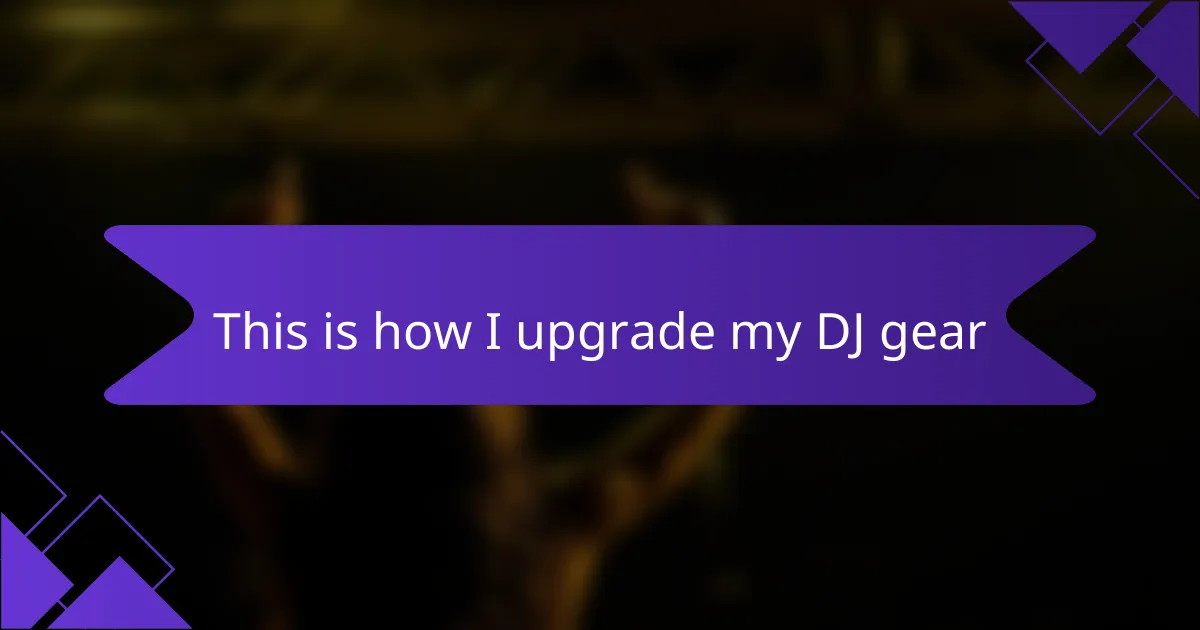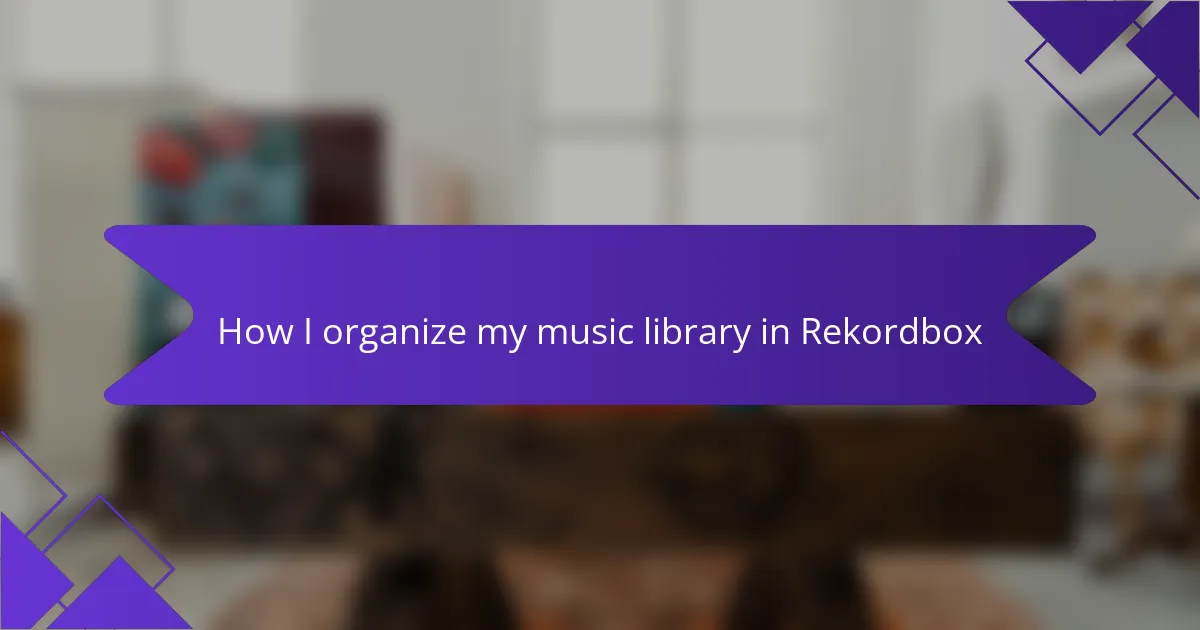Key takeaways
- Vinyl DJing offers a unique tactile experience, rich sound quality, and emotional connection to music that digital formats often lack.
- Challenges include the weight and bulkiness of records, maintenance needs, and limited song availability.
- Essential tips for beginners include investing in quality equipment, practicing beatmatching, building a diverse record collection, and learning proper record care.
- Embracing mistakes as learning opportunities is vital for growth in the art of DJing.
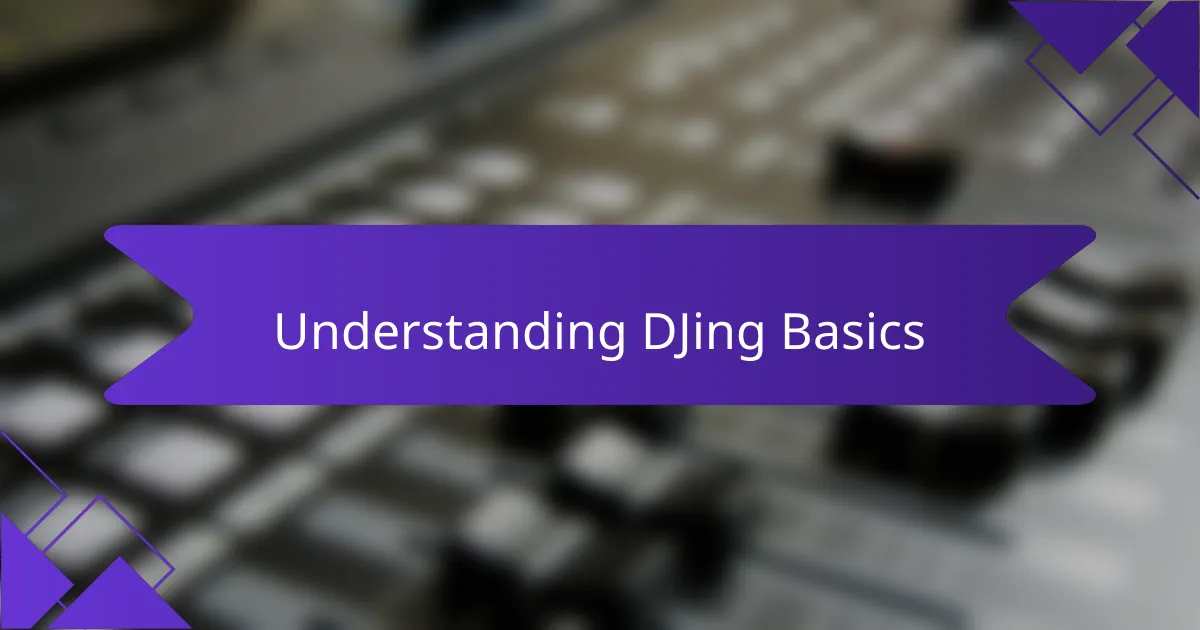
Understanding DJing Basics
When it comes to DJing, understanding the basics is crucial for anyone looking to get into the craft. I remember the first time I scratched a record—it was both exhilarating and daunting. The tactile feedback of vinyl under my fingers provides a connection that’s hard to replicate with digital mediums. There’s a certain artistry in physically manipulating the record, and I believe it fosters a deeper understanding of beat matching and transitions.
In my view, the key difference between digital and vinyl DJing lies in the experience itself. Vinyl requires you to be more present, as you can’t rely on screen cues the way you might with digital software. That presence turns each set into a unique performance; you’re constantly interacting with the music and the crowd in real time.
Here’s a comparison of some basic aspects between vinyl DJing and digital DJing:
| Aspect | Vinyl DJing | Digital DJing |
|---|---|---|
| Sound Quality | Warm, rich sound; analog texture | Clean, clear sound; depends on file quality |
| Physicality | Tactile experience; manual manipulation | Screen-based; less physical interaction |
| Setup Complexity | Requires turntables and mixer; simpler hardware | Requires software and controllers; more tech involved |
| Portability | Bulky and heavy; transport challenges | Lightweight and portable; easy to transport |
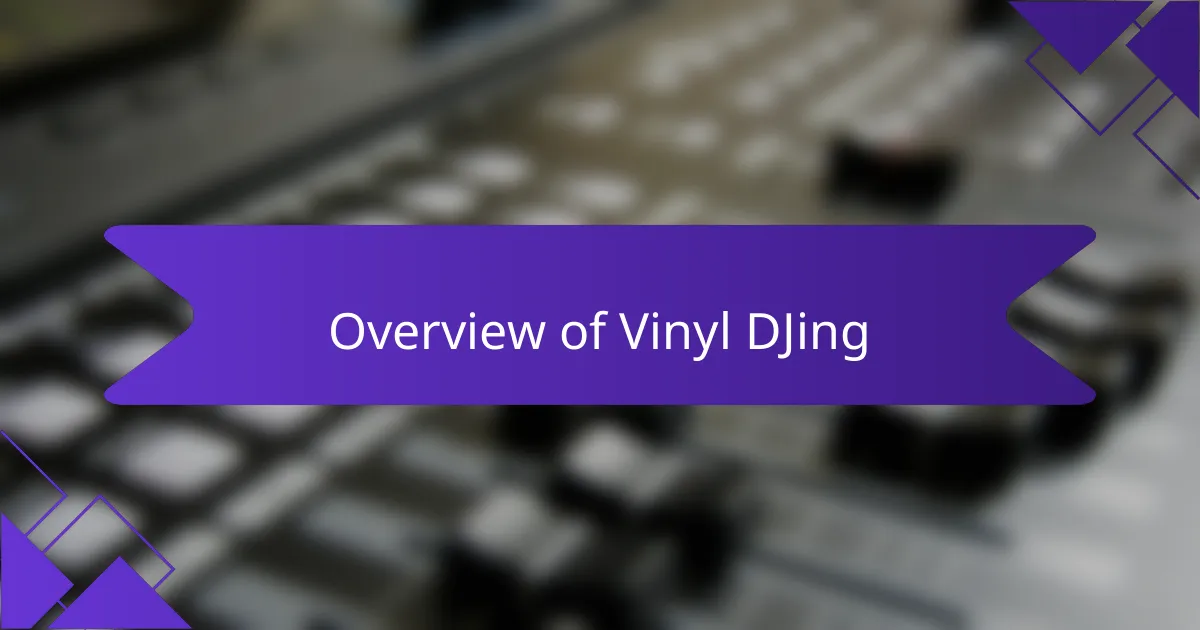
Overview of Vinyl DJing
Vinyl DJing has a unique charm that digital formats often lack. There’s something deeply satisfying about physically handling records, the dense grooves etched into the vinyl, and the warm sound that invokes a genuine connection to the music. I still remember the first time I spun a vinyl; the moment the needle hit the record, it felt like magic—every crackle and pop brought the track to life in a way that digital copies just can’t replicate.
The tactile experience of flipping through records and choosing the perfect track has an emotional appeal that transcends the performance itself. I find that digging through crates not only fuels my creativity but also keeps me connected to the rich history of music. Each record tells its own story, and there’s a joy in sharing that journey with an audience.
Here’s a quick comparison of vinyl DJing versus digital DJing:
| Aspect | Vinyl DJing | Digital DJing |
|---|---|---|
| Sound Quality | Warm, rich sound | Clear, precise sound |
| Tactile Experience | Physical interaction with music | No physical interaction |
| Setup Time | Longer setup | Quick setup |
| Portability | Less portable | Highly portable |
| Emotional Connection | Strong, nostalgic | Variable, depends on the user |
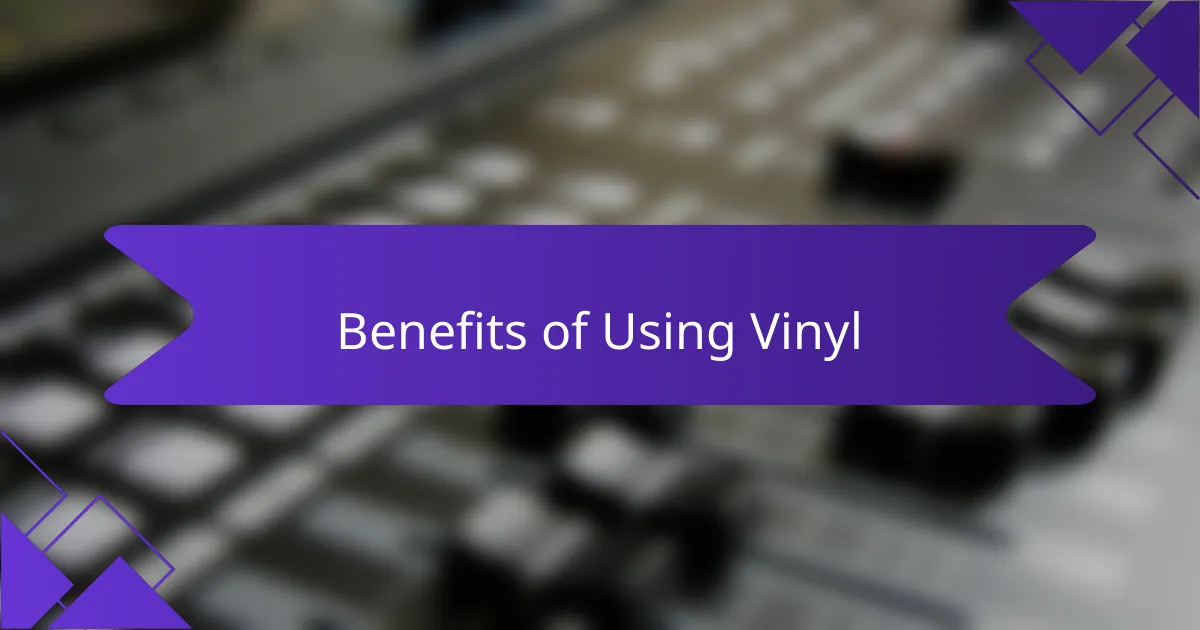
Benefits of Using Vinyl
When it comes to DJing with vinyl, the benefits are undeniable. I love the tactile experience of handling records—the weight of them in my hands and the anticipation before dropping the needle adds to the magic of the performance. The sound quality is richer and more authentic compared to digital formats, as vinyl captures nuances that can often be lost in digital compression.
Another significant advantage is the connection to the music itself. Digging through crates of records not only feels like a treasure hunt, but it also deepens my appreciation for the artistry behind the music. Each scratch and groove tells a story, creating a more intimate relationship between the DJ, the music, and the audience.
Finally, the visual and physical presence of vinyl is compelling. Watching a record spin while feeling the vibrations of the sound makes the atmosphere come alive. It’s an experience that transcends mere entertainment and becomes an event.
| Aspect | Vinyl | Digital |
|---|---|---|
| Sound Quality | Richer, warmer sound with nuances | Can be compressed, potentially losing depth |
| Tactile Experience | Physical handling of records adds to the experience | Less physical interaction with music format |
| Connection to Music | Deep appreciation through crate digging | Often less personal, more convenient |
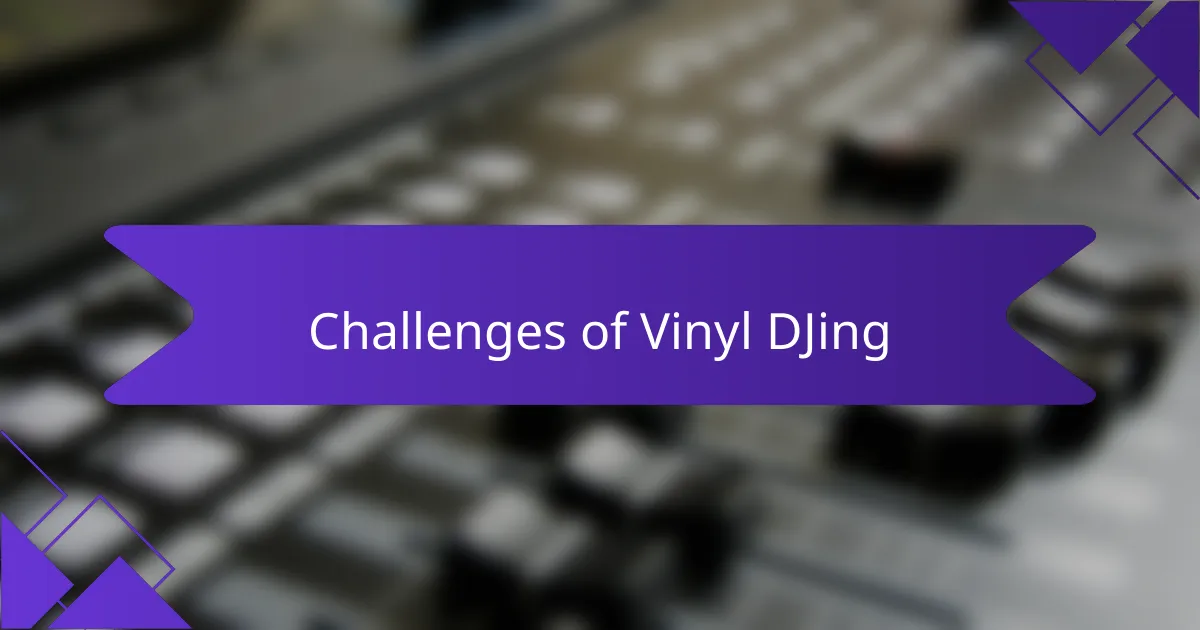
Challenges of Vinyl DJing
Vinyl DJing certainly brings a unique charm and warmth to the music experience, but it’s not without its challenges. From my own experience, one of the most significant hurdles is the weight and bulkiness of vinyl records. Carrying a crate full of records to a gig can feel like a workout. I’ve had nights where I wished I had a more portable setup, especially when sharing a tight stage with other DJs.
Another challenge is the maintenance and care that vinyl requires. Scratches, dust, and warping can all compromise sound quality, which is something I’ve personally dealt with more than once. Nothing is more heart-wrenching than hearing a pop or skip during a heartfelt moment on the dance floor. It’s essential to have a proper storage solution and cleaning kit at your fingertips.
- Weight and portability of records make transportation difficult.
- Vinyl requires regular maintenance to avoid scratches and dust.
- The risk of warping can affect sound quality adversely.
- Limited song selection since not all tracks are available on vinyl.
- Need for specialized equipment, which can be expensive.
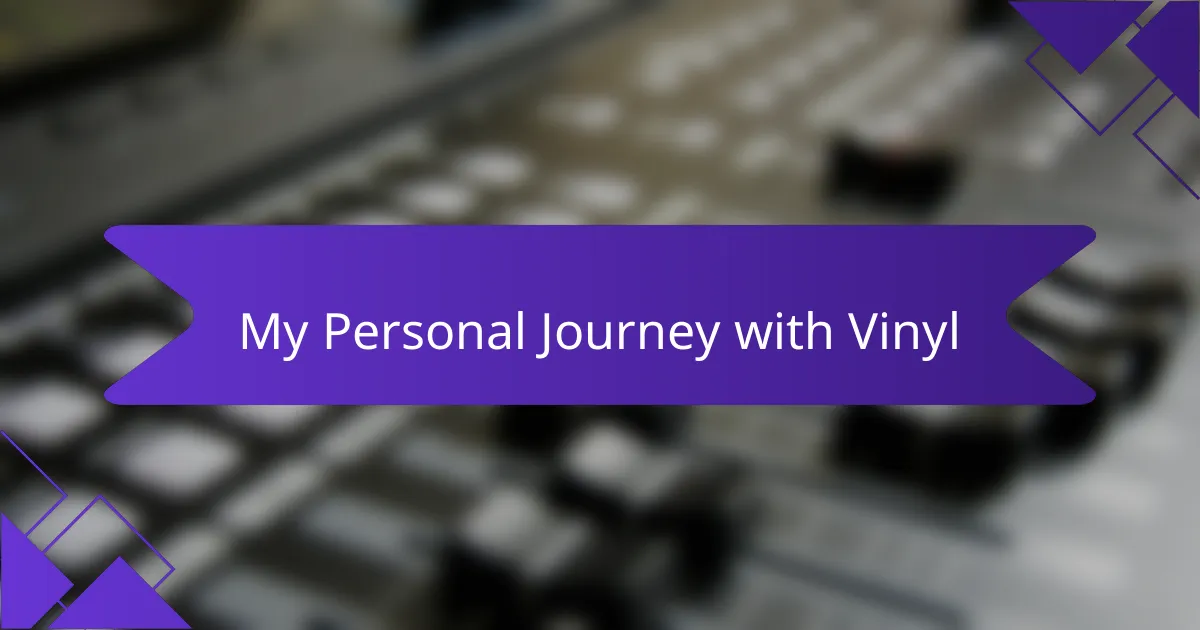
My Personal Journey with Vinyl
My journey with vinyl began in my teenage years, sparked by my love for music and the tactile experience of handling records. There’s something magical about pulling out a record, placing it on the turntable, and gently dropping the needle. The warm crackle that fills the room immediately brings a sense of nostalgia that digital formats just can’t replicate.
As I honed my DJ skills, vinyl became my trusted companion, teaching me the art of music layering and the importance of timing. I remember the thrill of finding rare records at local shops, each one with its own history and sound. Those moments reminded me that vinyl is not just about the music; it’s about the journey—the stories behind each track.
- Vinyl offers a unique tactile experience that digital formats lack.
- Each record has its own history and story, making it more personal.
- The warm sound quality of vinyl adds depth to music.
- Digging for rare records has an adventurous thrill that connects you to the music community.
- Mixing with vinyl teaches valuable timing and layering skills that enhance your craft.
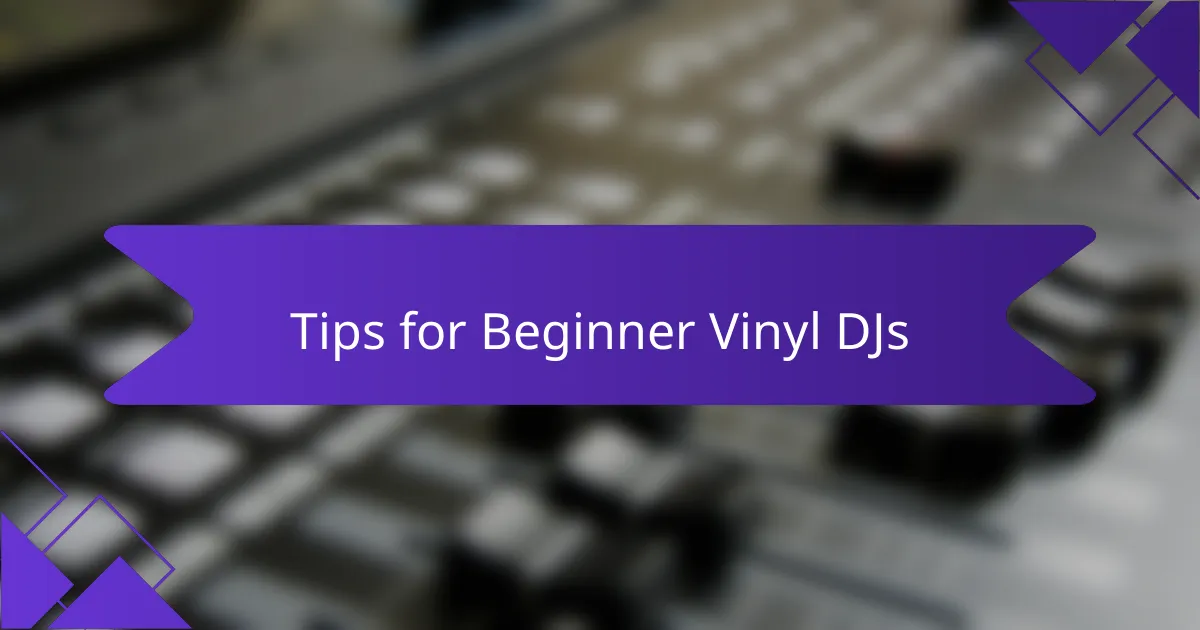
Tips for Beginner Vinyl DJs
Starting out as a vinyl DJ can feel both exciting and overwhelming. I remember when I first dropped the needle on a record; there’s something inherently special about that tactile experience that digital formats just can’t replicate. The warm sound, the physical connection to the music, and the joy of exploring different records are all part of the magic.
To help you navigate this beautiful journey, here are some essential tips to keep in mind:
- Invest in quality equipment: Good turntables and a reliable mixer make a significant difference in sound quality and performance.
- Practice beatmatching: This essential skill takes time to master, so dedicate regular practice sessions to get comfortable without relying on sync buttons.
- Build a diverse record collection: Explore different genres and eras to broaden your musical palette and find unique tracks to mix.
- Learn about record care: Proper maintenance, including cleaning records and needles, ensures longevity and optimal sound quality.
- Don’t be afraid to make mistakes: Each mix is a lesson, so embrace your blunders as opportunities for growth.
Embrace the journey and enjoy every groove!

